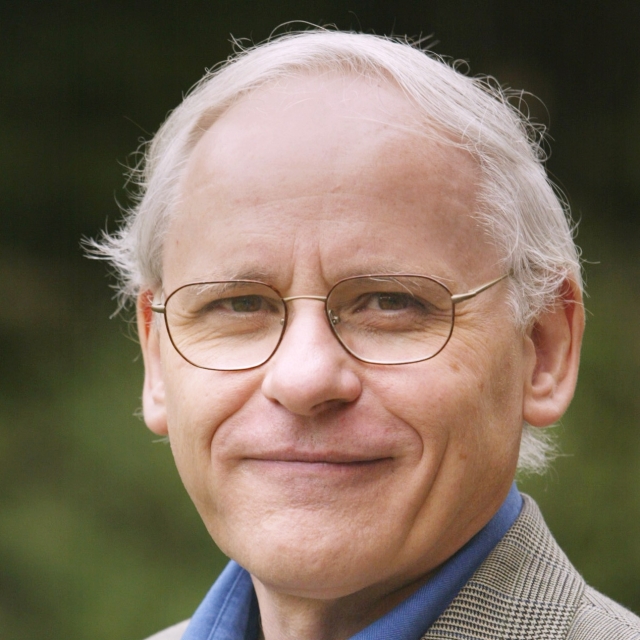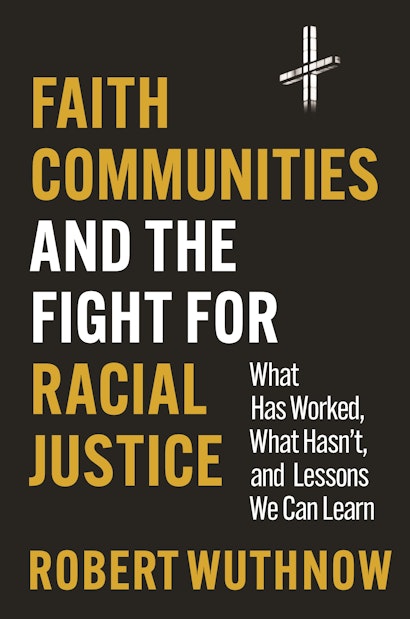Have progressive religious organizations been missing in action in recent struggles for racial justice? In Faith Communities and the Fight for Racial Justice, Robert Wuthnow shows that, contrary to activists’ accusations of complacency, Black and White faith leaders have fought steadily for racial and social justice since the end of the Civil Rights movement of the 1950s and 1960s. Wuthnow introduces us to the communities, congregations, and faith-based coalitions that have worked on fair housing, school desegregation, affirmative action, criminal justice, and other issues over many years. Often overshadowed by the Religious Right, these progressive faith-based racial justice advocates kept up the fight even as media attention shifted elsewhere.
What led you to write this book?
RW: The book grew out of the discussions a few years ago responding to the tragic deaths of George Floyd, Trayvon Martin, Michael Brown, and others, and to the emergence of the Black Lives Matter movement. I was involved in faith-based anti-racism groups that struggled with questions about how better to think about racial justice. Because I had taught about religion and racial inequality for many years as a sociologist and written about some aspects of it in other books, I thought I might be able to contribute in a small way by writing this book. There was a popular impression at the time that faith communities hadn’t been doing much at all about racial justice during the past half century or so. I wanted to see if that was the case. I learned that it wasn’t. Quite a lot of important work has in fact been going on. And, even though it has accomplished less than hoped for, much can be learned by considering what faith communities have tried to do.
What kinds of materials did you draw on for the book?
RW: I wanted this to be a book for non-specialists—readers who might be picking it up as students, participants in faith communities, journalists, or interested members of the general public. I wrote it in non-technical language and as narrative history. It tells the story of what Black and White faith communities have been doing for racial justice since the end of the Civil Rights Movement. The materials therefore are from congregational histories, denominational deliberations, ethnographic studies, quantitative data, government reports, court cases, and vast numbers of on-the-scene accounts written by local observers. Most of the individuals and groups would describe themselves as participants in progressive faith communities, but they span a wide spectrum in terms of theology and tradition.
What did you discover that especially impressed you about what faith communities have been doing?
RW: The book discusses six major kinds of racial justice advocacy in which progressive faith communities have been involved over the past half century: fair and affordable housing, community development, busing and affirmative action, racial reconciliation, criminal justice, and voting rights. Of these, the one that especially impressed me was fair and affordable housing. I wasn’t expecting this because it mostly happens behind the scenes. Even in my own community, I was unaware of how much is being done. Percentage-wise, faith communities’ role has been small. But, compared to the average congregation that may do well to meet a budget of several hundred thousand dollars, faith communities have found ways to raise tens of millions of dollars for fair and affordable housing programs. Some of the most effective programs in Washington, D.C., Brooklyn, Chicago, and San Diego, for example, have been faith-based. An important lesson from these programs is the skill it has taken and the coalitions that have made them possible. The programs were effective because faith leaders drew on their own congregations and denominational networks but also worked in partnership with government agencies, municipal officials, banks, developers, and management companies.
Were there any particular individuals or groups whose efforts stood out?
RW: Reverend Traci Blackmon’s work truly stands out. So does Senator Raphael Warnock’s. The book also features dozens of individuals who have done amazing work quietly and in their own ways. There are pastors like Ben Chavis, James M. Lawson Jr., and Leah Daughtry. There are stories about little-known faith leaders who led school desegregation campaigns, organized community development programs, shut down White supremacist meetings, and took issue with racial profiling. And there are examples of faith groups that responded to gun violence in their communities, mentored children during busing controversies, developed prison visitation and rehabilitation programs, and initiated racial reckoning efforts among their members. These were the happier stories. There were also housing projects that went bankrupt, lawsuits that failed, congregations that lost members, and churches that split.
What role did faith play in the lives of these individuals and groups?
RW: It varied, of course, but mostly they took seriously the biblical command to do justice, love mercy, and walk humbly before God. They believed that Jesus meant it when he taught his followers that loving God and loving one’s neighbors involves caring for the oppressed, the poor, and the needy. Their faith persuaded them that being a witness for justice was worth the effort even when the results were disappointing. They believed that with God’s help there could be “a way out of no way.” Faith was a matter of conviction and a source of hope. They found support through participation in a faith community. They also considered it necessary to work for justice in the world outside their faith communities.
Many faith communities are becoming more interested in facilitating racial reconciliation within local congregations. What are some of them doing that might be helpful for others to know about?
RW: One of the biggest challenges has been figuring out whether to be “colorblind” or to talk explicitly about race. The default option was to be colorblind, figuring that all God’s children were the same, after all. But the congregations that were serious about racial reconciliation did initiate difficult conversations about race. Some of them produced helpful study guides that other congregations could use. Others discovered material on the denomination’s websites. Still others found it useful to watch videos, read books, or discuss movies. There is also a valuable social science literature that examines what congregations have been doing. An important take-away is that racially diverse leadership is important but has to be done in a way that goes beyond token representation. Pulpit exchanges and partnerships among Black and White congregations have often proven helpful as first steps as well.
What would you say to critics who are worried that faith communities are becoming too woke?
RW: Anti-woke criticism has been weaponized to a greater extent even since I finishing working on the book. For some, it is a veiled way of expressing racial prejudice; for others, it may represent a short-hand rejection of liberal or progressive ideas; and in some instances it is being used to challenge diversity and equity initiatives. The criticism is often that children are being encouraged to feel bad about themselves. Among adults, faith communities are no stranger to conversations about sin, guilt, repentance, and forgiveness, so from that perspective woke discussions under some rubric might be possible. In most instances, though, faith communities are more likely to initiate effective dialogue by emphasizing God’s call to show mercy and work for justice. The key is to understand that racial injustice happens because of power structures as well as through the actions of individuals.
What’s the one thing you’d like readers to take away from this book?
RW: Faith communities have put a lot of valuable effort into thinking about—and finding ways to advocate for—racial justice that goes beyond the person-to-person level. While faith communities encourage participants to be kind to their next-door neighbors, they also offer resources for engaging with the larger institution-level challenges of racial inequality. Many of these challenges are beyond the scope of any particular congregation, but faith communities can also encourage greater awareness of social arrangements that either facilitate or deter racial justice.
Robert Wuthnow is a fellow of the American Academy of Arts and Sciences, a fellow of the American Philosophical Society, a Guggenheim Fellowship recipient, former president of the Society for the Scientific Study of Religion, and the recipient of numerous awards for his scholarly work. He is the author of Why Religion Is Good for American Democracy and What Happens When We Practice Religion? Textures of Devotion in Everyday Life (both Princeton) and many other books.

